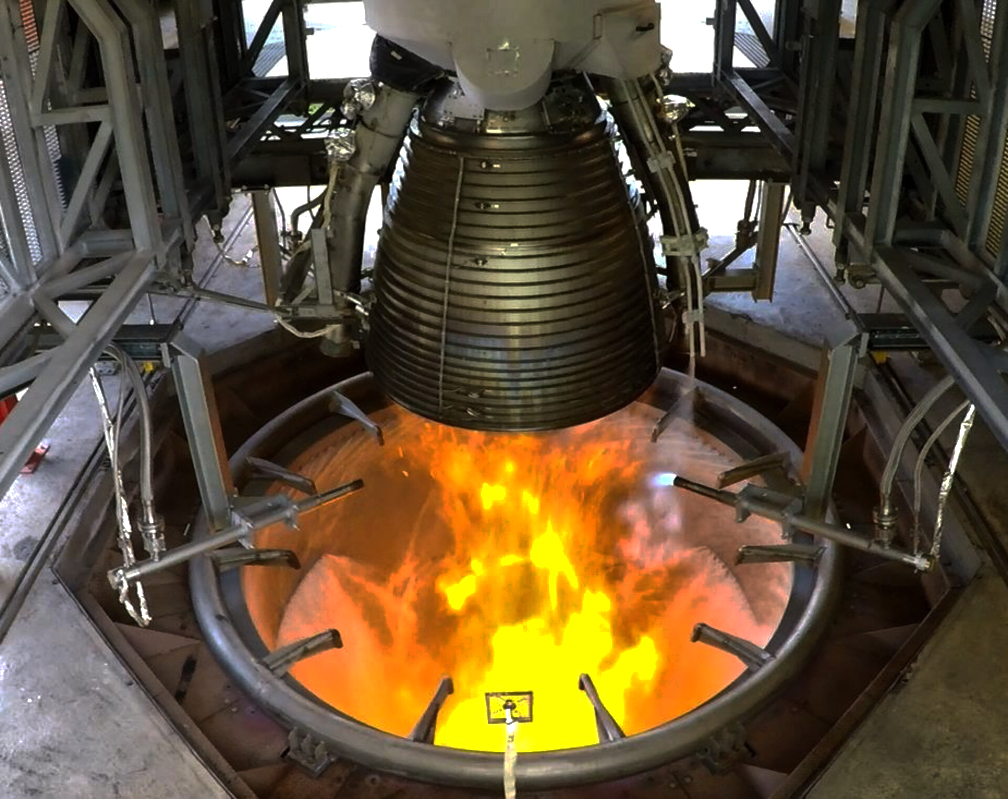
An ongoing project to develop a low-cost, reusable engine for European rockets made considerable progress over the summer and autumn, with a series of tests that achieved full ignition and, ultimately, a 30-second burn with re-ignition of an early prototype of the Prometheus engine.
Work at ArianeGroup’s test facility in Vernon, France, achieved first ignition in June of 2023 (pictured above), followed by the 30-second firing and re-ignition on October 20th.
The 100-ton thrust class Prometheus burns liquid oxygen-liquid methane fuel. Methane is clean burning and simplifies handling, to help enable reusability and reduce the cost of ground operations before and after flight.
Extensive use of new materials and manufacturing techniques is also expected to reduce costs to just a tenth of Ariane 5’s Vulcain 2, an upgraded version of which – Vulcain 2.1 – powers the core stage of Ariane 6.

According to ESA’s Prometheus program manager, Jean-Noel Caruana, tests run over the past year at Vernon have made “significant” progress toward addressing many of the challenges raised by ambitious new technology.
He added that testing so far has been done on a single prototype engine, but the test effort should accelerate with imminent delivery of two further examples. ArianeGroup, which is developing Prometheus under contract from ESA, will expand testing early next year with installation of one of these prototypes on a test bed modified for liquid methane fuel at German aerospace agency DLR’s test site in Lampoldshausen, Germany.
Work so far has been done with Prometheus mounted in an early prototype of a reusable rocket stage, called Themis, which is being developed in parallel with the engine under contract from ESA. While engine testing continues, work is also underway to prepare a more advanced Themis prototype for a series of “hop-tests” in Kiruna, Sweden. The objective will be to lift off and rise to as high as 100 m, to check flight and landing capability.

